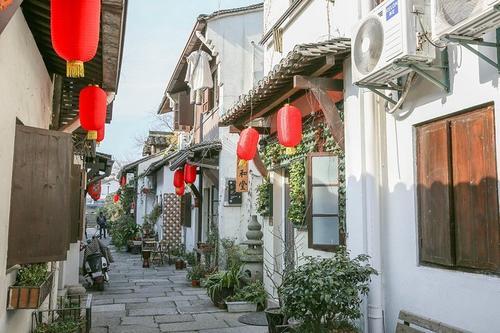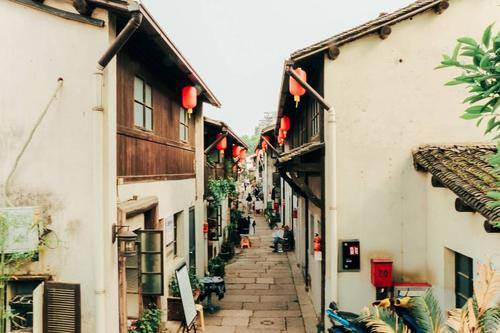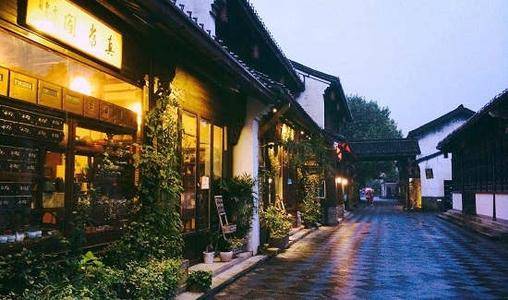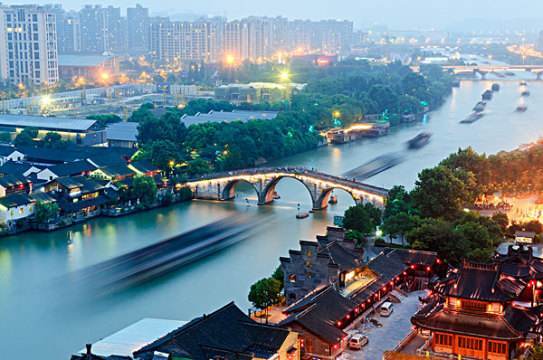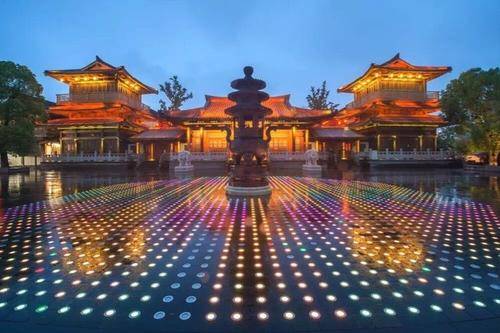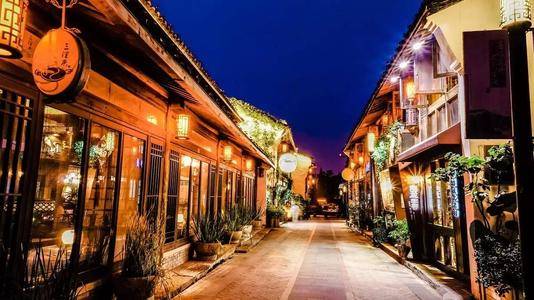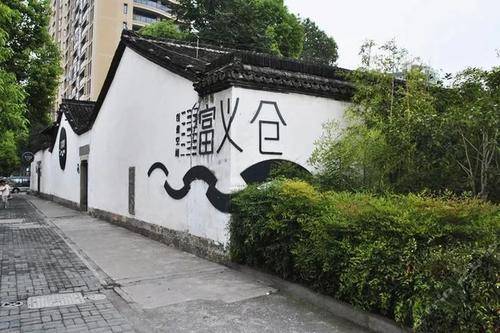Xiaohe Straight Street | The Daily Life of Old Hangzhou People
The houses on Xiaohe Straight Street are all original old houses, with few renovations. They have white walls, black tiles, wooden doors, and wooden windows, exuding a strong sense of life. The houses with white walls and black tiles stand quietly. There are no bustling tourists, no neon lights. About 80% of the residents here are old Hangzhou people, living contentedly in this lost tranquility. The famous 'Old Sauce Garden' of Hangzhou is also on this street. The once very famous Fang Zengchang Sauce Garden, which was a workshop for making soy sauce, old wine, and pickles, is located here. According to local elders, the sauce garden had a high counter at the entrance, and on the right side, there were three or four tables for local residents and passing guests to drink old wine. The sauce garden was open from morning until ten at night, and elderly locals liked to come here to drink night wine and reminisce.
Qiaoxi Historic Street | China Grand Canal Cultural Heritage
The Qiaoxi area is an ancient architectural complex in the Jiangnan water town. During the Ming and Qing dynasties, this area was known as the 'Beiguan Night Market.' Due to the convenient transportation of the canal, six trades (rice, fish, paper, wine, firewood, and foreign goods) and six establishments (opium dens, teahouses, theaters, restaurants, gambling houses, and brothels) built their shops along the river, earning the nickname 'Little Shanghai' and attracting various crowds.
Gongchen Bridge | Southern Terminus of the Beijing-Hangzhou Grand Canal
Gongchen Bridge was built 370 years ago and was known as the 'First Bridge of Jiangnan' after its completion. For over a thousand years before that, there was no specific landmark to indicate the entry of cargo ships into Hangzhou. The appearance of Gongchen Bridge finally provided a geographical marker for the southern terminus of the Beijing-Hangzhou Grand Canal. This is a bridge with a rich heritage; standing on it, one can almost feel history flowing like the river beneath. It is also the starting point of the southern section of the Beijing-Hangzhou Grand Canal.
Xiangji Temple | The Millennium Ancient Temple with the God of Food
The only temple in the country that enshrines the God of Food. In the past, pilgrims would devoutly prostrate themselves at Xiangji Temple to offer the 'first incense'. This place is also a must-visit for believers heading to Lingyin and Tianzhu for pilgrimage and incense offerings. It holds a high status in the canal and Hangzhou Buddhist community. The temple looks small from the outside, but once inside, it is quite spacious. Many lay practitioners are chanting scriptures, and there is free incense available for visitors. Notably, the temple's vegetarian noodles are quite famous in Hangzhou. As soon as they are served, the aroma is enticing, and once you start eating, you can't stop until the bowl is empty.
Dadou Road | A Historical District Where Prosperity Fades but Charm Remains
Dadou Road was once an important trade center in the northern part of Hangzhou. It still retains the Xiangji Temple Stone Pagoda, the old site of the National Silk Reserve Warehouse, and a large number of residential buildings from the late Qing Dynasty and early Republic of China.
Fuyi Granary | The Wealthiest Granary in the World
During the Qing Dynasty, all the rice used in Hangzhou was stored in Fuyi Granary. 'In the north, there is Nanxin Granary; in the south, there is Fuyi Granary.' The granary consists of 13 buildings and has a history of over a hundred years.
